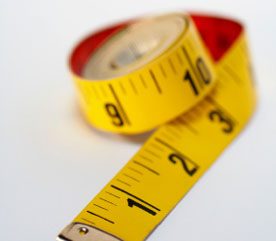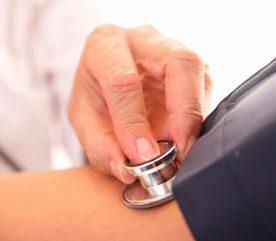
1. Have a PERF-ect Day
Essentially, here are four things you should monitor every day to make sure you are living healthily: the amount of fruit and vegetable you ate that day (fresh Produce); wherever you walked and were active (Exercise); whether you got at least 15 minutes of laughter and fun time for yourself (Relaxation); and whether you got enough beans, grains and other high-fibre foods (Fibre). If you can say you did well on all four, your day has been extremely healthy.

2. Monitor Your Sleepiness
There are three good ways to tell if you’re getting enough sleep. First, do you require an alarm clock to wake up most mornings? Second, do you become drowsy in the afternoon to the point that it affects what you’re doing? Third, do you doze off shortly after eating dinner? If the answer to any of these is yes, you need more sleep. And if you’re getting enough sleep (about 8 hours) and still have these troubles, talk to your doctor about your low energy.

3. Check Your Hairbrush
If your hair’s falling out, ask your doctor to check your levels of blood ferritin, an indication of how much iron your body is storing. Some studies suggest low levels may be related to unexplained hair loss. Thyroid disease is another fairly common cause.

4. Measure Yourself
Measure your height every year after you turn 50. This is especially important for women as a way of assessing posture and skeletal health. A change in stature can be as informative as a change on a bone density test in terms of assessing your overall bone health. If you’re concerned, ask your GP about having a bone density test: it picks up bone loss even before your height changes.

5. Monitor Your Urine
It may sound weird, but keeping track of how dark your urine is a useful health indicator. Your urine should be a clear, straw colour; if it’s dark or smells strong, you may not be getting enough fluids. If it stays dark-coloured even after you increase your liquid intake, make an appointment to see your doctor. If it’s bright yellow, it may be the B vitamins in your multivitamins.

6. Check Your Heartbeat After Exercise
A study published in the Journal of the American Medical Association found that women with poor heart recovery (HRR) after exercise had twice the risk of having a heart attack within 10 years as those who had normal HRR. To test your HRR after regular strenuous activity, count your heartbeats for 15 seconds, then multiply by four to get your heart rate. Sit down and wait 2 minutes before checking again. Subtract the second number from the first. If it’s under 55, your HRR is higher than normal and you should talk it through with your doctor.

7. Diabetics Should Check Their Feet Every Day
If you’re a diabetic, you will be susceptible to foot damage so examine your feet carefully for any blisters, fungus, peeling skin, cuts or bruises. Because people with diabetes often have some nerve damage in extremities such as the feet, these daily self-examinations give critical clues as to how well you’re monitoring your blood sugar and if you might have nerve damage.

8. Check Your Blood Pressure
Every six months, be sure to check your blood pressure at home with a blood pressure monitor or at a local health clinic. If the top number is more than 140 (130 if you have diabetes) and the bottom number is higher than 90 (80 for diabetics), wait a day then check it again. If it’s still high, make an appointment with your doctor.